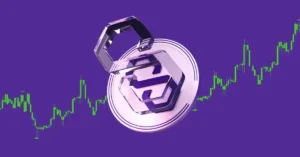The debate over Bitcoin’s 21 million supply cap has reignited after BlackRock’s recent three-minute explainer video introduced a surprising disclaimer. While the video highlighted Bitcoin’s capped supply as a key feature preventing inflation and ensuring scarcity, it added a cautionary note: “There is no guarantee that Bitcoin’s 21 million supply cap will not be changed.”
BlackRock explains #Bitcoinpic.twitter.com/X2fPl8tL2s
— Michael Saylor⚡️ (@saylor) December 17, 2024
This statement stirred controversy, with critics questioning Bitcoin’s theoretical scarcity. Michael Saylor, chairman of MicroStrategy and a staunch Bitcoin advocate, reposted the video, drawing mixed reactions. Dashpay’s Joel Valenzuela claimed that changes to the cap could be framed as “always part of the plan,” while pseudonymous Ethereum developer Antiprosynthesis added, “BlackRock understands Bitcoin better than Bitcoiners.”
Can Bitcoin’s Supply Cap Be Altered?
Technically, altering Bitcoin’s supply cap is possible but would require widespread consensus among the community, including node operators, developers, miners, and investors. A change would involve a hard fork, creating a new blockchain network with updated rules. However, Bitcoin developer Super Testnet argues such a change would result in a network that is no longer “Bitcoin” as defined by its foundational principles.
“The inflation cap is definitional to Bitcoin,” Super Testnet stated, referencing Bitcoin’s original white paper by Satoshi Nakamoto. Altering the cap would fundamentally redefine the cryptocurrency’s identity.
Why Change the Cap?
Bitcoin’s security model depends on miner incentives, currently derived from block subsidies and transaction fees. However, block subsidies halve approximately every four years, with the next halving in 2028 reducing rewards to 1.625 Bitcoin per block. This raises concerns about long-term miner sustainability, especially as transaction fees alone may not suffice to maintain network security.
During the 2024 Bitcoin Ordinals craze, transaction fees spiked, temporarily boosting miner revenues. However, such periods of high activity have been seasonal. Bitcoin’s application layer must evolve to ensure miners remain incentivized as block rewards diminish.
The Bigger Picture
The possibility of altering Bitcoin’s supply cap is a theoretical exercise rather than an imminent reality. History, such as the Blocksize War of 2016-2017, shows that Bitcoin’s community fiercely protects its decentralized principles. Despite miner support for larger block sizes, node operators and investors rejected the proposal, favoring layer-2 solutions instead.
Also Read: U.S. Spot Bitcoin ETFs See Record $6.7B Inflows in 15-Day Streak Amid Bitcoin Price Surge
Ultimately, Bitcoin’s 21 million cap remains central to its identity. While discussions about its immutability persist, any attempt to change it would face significant resistance from the community, safeguarding its position as the gold standard of digital scarcity.
Disclaimer: The information in this article is for general purposes only and does not constitute financial advice. The author’s views are personal and may not reflect the views of Chain Affairs. Before making any investment decisions, you should always conduct your own research. Chain Affairs is not responsible for any financial losses.



